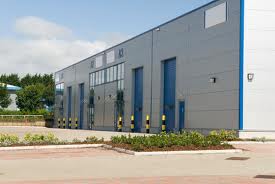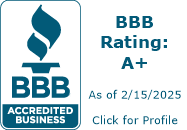5 red flags when evaluating a commercial transaction
I hope everyone is off to a great spring. Now that the weather has broken the real estate market in many areas continues to heat up. I personally go in and inspect hundreds of properties a year throughout CO, GA, and IL. I wanted to share a list of 5 red flags I look at in when I walk through every commercial property.
Your next question probably is: what is your expertise in the commercial real estate market (learn more about me). Since we are a private/hard money lender and loan our own funds, we don’t require appraisals. Either myself or one of the other partners look at each transaction to put a value on the property before funding. I have also managed over a million square feet of commercial space throughout the country. I typically go in over 200 properties a year to underwrite for our loans. For this article, I’m going to focus on the industrial sector.
This list is not meant to be all inclusive but a starting point when evaluating a property. Obviously you want to go through a full property inspection. The list below is meant to quickly identify items that could be issues so that you don’t waste time/money on extensive due diligence only to discover one of the items below is a deal killer.
- Ceiling height: on an industrial building in my opinion, any ceilings less than 15ft clear (for many users they require 18+ clear height) is functionally obsolete. Today’s industrial/light industrial users want to stack material, equipment, etc… up.
- Roof condition: When I walk a building I look for signs of leaks (one building I went into had 50 buckets spread throughout the building, as I looked up I could it was pretty apparent why), I also look at google earth (it is amazing how good of a view you can get of a roof). Unlike a single family home, roofs can be very expensive on commercial properties. For example assume you buy a 100k foot building and discover that the roof needs to be replaced; this replacement likely will cost upwards of $400,000.00 depending on how bad of shape the existing roof is
- Ingress/Egress: most industrial/light industrial users have heavy equipment/trucks that make deliveries/pickups or need access. I can’t tell you how many buildings I have been in that have a dock high door located down a narrow ally that is nearly impossible to get a box truck (or any truck) into.
- Cracks/settling: the majority of industrial/light industrial buildings are tilt up concrete or block that we lend on (we do very few full metal buildings), whenever I go into a building, I walk the entire interior and exterior to look for cracks or signs of settling (also look at the floor). A large crack could be an indication of a much bigger problem
- Possible environmental issues: Being in the industrial/light industrial arena, there is always a possibility of environmental contamination. The biggest red flag is when items are not stored neatly and clearly labeled (for example containers of waste, raw materials, etc..). I have walked into many building where there were containers of liquid pushed into a corner and obvious signs of spilling (stains on the floor, etc..)
I hope you found the above useful for your commercial property due diligence. If you have other tips, feel free to comment and add them below. For more information on Fairview’s commercial hard money loans: Commercial hard money ; for more information on Colorado Commercial Hard Money loans, and for Georgia hard money loans
By Glen Weinberg
COO/Partner Fairview Commercial Lending

